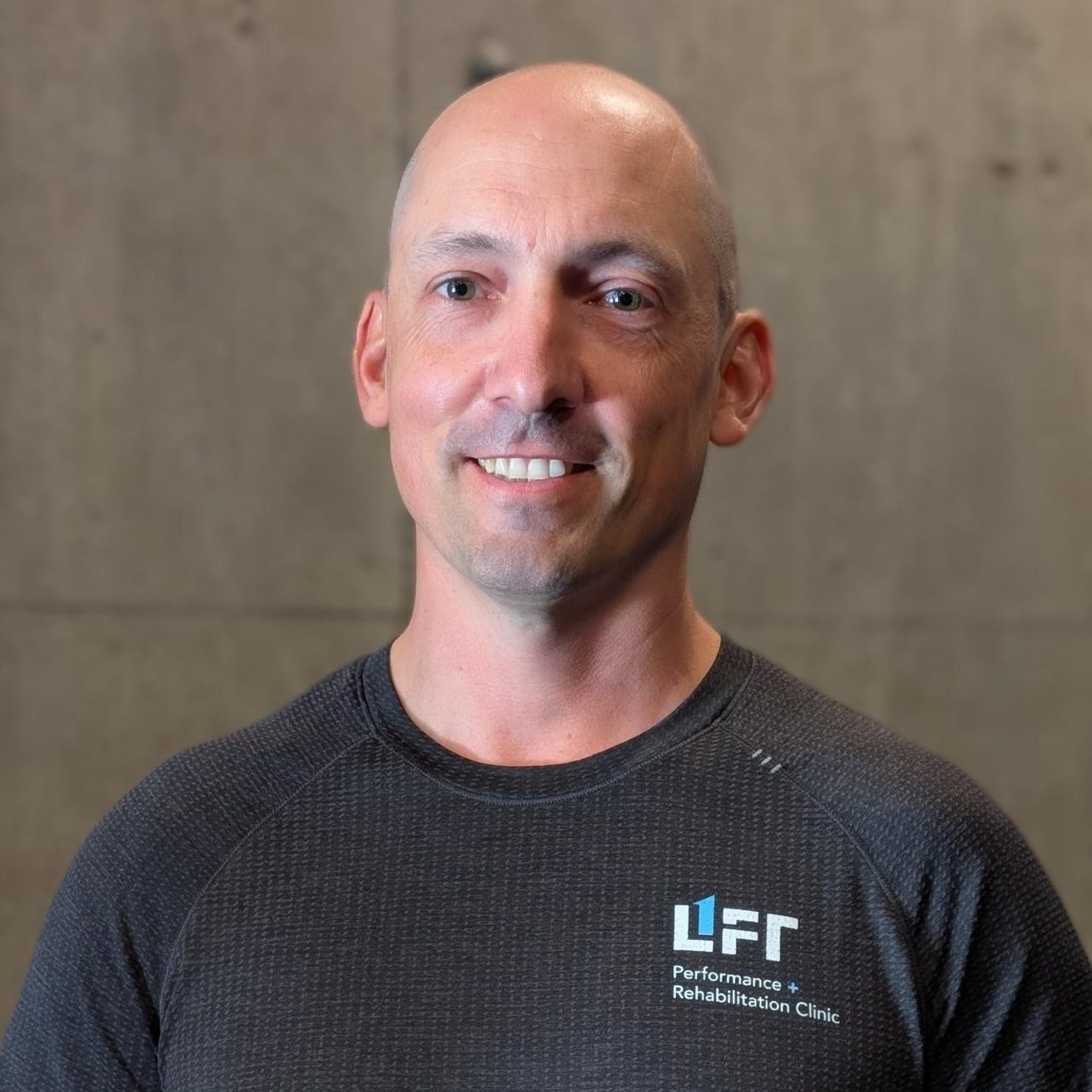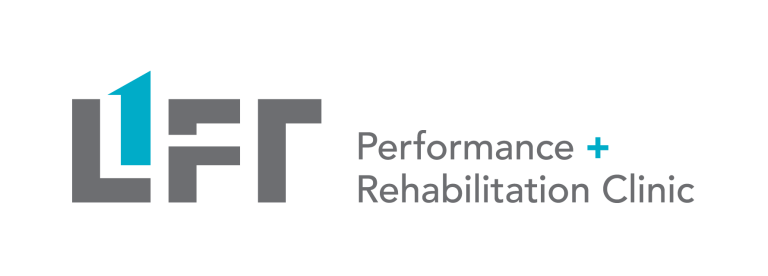Table of Contents
Really? Strength Training for Kids Age 8-12?
As a physiotherapist, strength coach and founder of Lift Clinic, today I’d like to take some time to guide you through a deep dive on optimal physical development for kids age 8-12. Specifically, we advocate for kids to get a minimum of 1 hour moderate to high intensity exercise per day, through a varied range of activities. But what about strength training – is that simply too much for kids these age? Are there any concerns? Is it only something that fanatical, sport-obsessed parents are pushing their kids into? Or does it have a lasting place for kids in this age group?
Do they even like it? As a father of two kids age 8 and 10, I can say without question that they and their friends have LOVED coming into the gym. But the more I learn about injury prevention – and particularly ACL injury prevention in girls age 12 and up, I’m becoming even more motivated to keep them coming back, and help spread the word in the community.
Recently, seeing my son go through an ankle sprain at age 8, prompted me to take a closer look at his movement patterns, balance, hip/core strength, and flexibility – and not surprisingly, although he is extremely active, I found several significant issues he needs to work on. There’s no reason to wait. This summer, we’ll be working on his straight leg raise flexibility, a range of balance exercises, and a broad set of fundamental movements like squats, split squats, jumping and landing skills, as well as rehabbing that ankle.
In November 2024, we invited my daughter’s U11 soccer team to come in and participate in a fun, one-off “Discover Your Strength – Intro To Strength and Conditioning” workshop. The girls absolutely loved it, and the team decided to continue training for 6 more sessions. 4 girls continued with another 10 sessions to follow, and the girls now continue to come in and out for 5-10 sessions in small groups, partner training and 1:1 personal training, at times that work well in their schedule throughout the year.
Why Does Strength Training Matter for Kids age 8-12?
Participation in organized youth sports alone does not ensure that young athletes will attain a level of muscular fitness that will optimize performance and limit injury risk. Many youth sports practices do not provide a sufficient amount of moderate to vigorous physical activity, or technical movement skill training (often not the specialty of community level coaches). This leaves children ill-prepared for the demands of sport and life, significantly increasing their risk of injury.
At Lift Clinic, we believe in a proactive, integrated approach that goes beyond just treating symptoms. We empower young bodies to build resilience, master movement, and unlock their full potential, ensuring they’re not just running faster or jumping higher, but truly stronger for life.
In this post, we’ll dive into the science behind why strength and conditioning is not just safe, but essential for kids aged 8-12, how it builds a foundation for lifelong health and athletic prowess, and how our expert team in Vancouver can guide your child on this vital journey.
The Shifting Landscape of Youth Physical Activity: A Growing Concern
The physical activity landscape for today’s youth is marked by a lack of diversity in movement patterns and activities and less free/unstructured play. Let’s take a look at why that matters.
Early Sport Specialization & Overuse Injuries
A growing trend sees youth pushed into higher intensity and more frequent training schedules at younger ages, leading to early sport specialization. While seemingly active, this intense participation in a single sport is directly linked to a significant increase in overuse injuries. These chronic injuries (like jumper’s knee, patellofemoral pain syndrome, low back pain and shoulder impingement) account for a substantial proportion of all injuries among children and adolescents, ranging from 45.9% to 54.0%. Research indicates that youth who train more hours per week than their age in years, or whose ratio of organized sports to free play exceeds 2:1, face a significantly increased risk of serious overuse injuries.
The negative impacts extend beyond physical pain, often leading to nonfunctional overreaching, burnout, and ultimately, dropping out of sports altogether.
Thus, if your kids do train a lot, it’s important to support their bodies and teach them appropriate movement skills and self care strategies. This isn’t the job of their sport coaches – sport coaches will teach them skills and strategy of the sports. Strength coaches and clinicians will teach them to understand their body, fix movement issues that are hindering their performance and address root causes of pain/weakness.
Surprisingly, for early specializers, there is a subtle negative impact on “physical literacy.” Their intense focus on sport-specific skills often comes at the expense of developing a wide range of diversified fundamental movement skills. Current research highlights that a multifaceted resistance training program, for instance, can help ensure the diversification of motor skill development even for early specializers.
In other words, simply being “active” is not enough; the type and variety of activity are paramount for healthy development. This understanding underscores the importance of educating parents not just on the necessity of getting their children moving, but on how they are moving and what foundational skills they are developing.
Strength coaches are trained to look at a wide range of movement patterns, instruct proper form, provide feedback/cueing when they see kids aren’t executing properly, and even refer out for further assessment when kids don’t respond to cueing (to find out if there’s an underlying reason for their movement limitations).
The Vulnerability of Young Girls
Young girls represent a particularly susceptible population due to unique biomechanical, anatomical, and hormonal factors. Furthermore, adolescent girls experience higher rates of traumatic injuries, including anterior cruciate ligament (ACL) tears.
As an example, for my daughter who plays soccer, research shows that the incidence rate of ACL injuries in girls over 12 years old, would be as high as one per 12-athlete roster every 6 years, assuming 2 practices and one game for 7 months of the year. For girls who go to 4-5 sessions plus games and tournaments, year round, these numbers approach one in 10 kids tearing their ACL every 2 years.
While especially alarming for girls, the injury rates are about half this for boys, which is still very significant. These rates are simply unacceptable and I want to do everything I can to help my kids avoid this, and yours too.
Increases in body mass and the height of their center of mass during puberty are often not accompanied by the same adaptations in strength and power seen in boys, which may place young girls at an increased risk of lower extremity injury. Deficits in lower extremity strength tend to increase from prepubertal to pubertal stages in girls, predisposing them to develop suboptimal neuromuscular control strategies during sports movements.
And I hate to say this but even in elementary school, the boys are running around every recess and lunch playing sports, while the girls have begun to transition to less active play – even for a sporty kid like my daughter.
By late puberty, a significant sex difference in strength, approximately 50%, emerges. This, combined with a physical activity gap between boys and girls (mentioned above) that often appears by age nine, highlights the critical need for targeted training programs specifically designed for young girls, and programs that support and encourage participation in a wide range of activities.
Let’s stop and think about this.
If you’re like me, you probably hope that your daughter will continue to be active, strong and proud of her physical skills through her teens and whole life. Now, consider that research suggests she’s already experiencing systemic pressures to decrease her activity levels at school before age 9. This surprised me. Statistics have been published for some time showing increased rates of sport dropouts in teen girls, but ask yourself – do you see signs that she’s already getting mixed messages or social pressure to be less active by or before age 9? What are you as a parent, going to do about it?
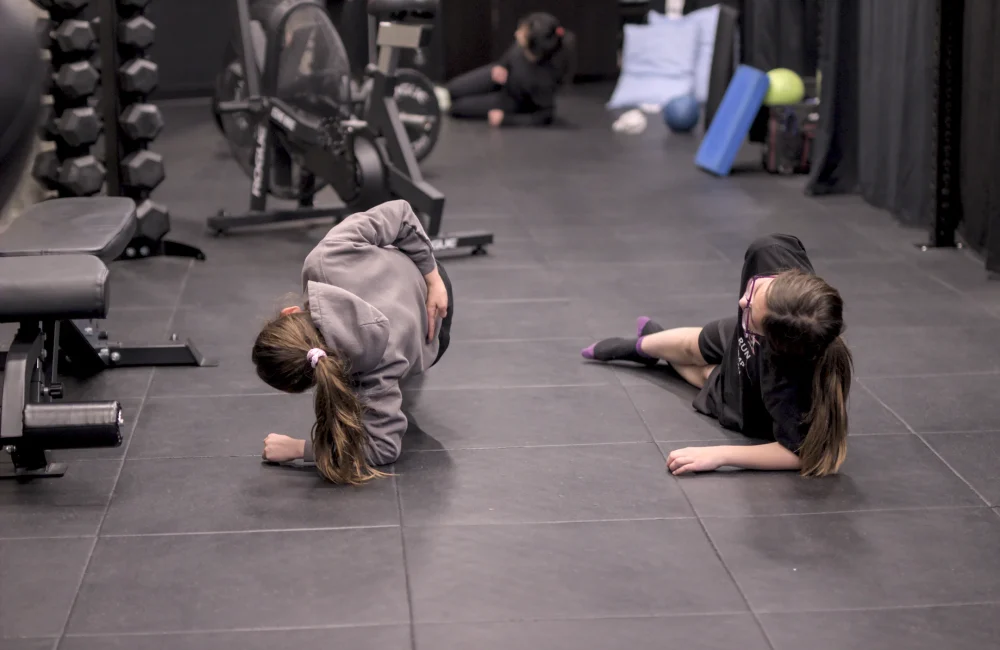
Beyond the Myths: The Science of Strength for Young Bodies
For many years, a common belief persisted that resistance training could harm the “immature skeleton” of children, leading many to avoid it. However, this traditional fear has been thoroughly debunked by scientific evidence.
Research now clearly indicates that childhood and adolescence are, in fact, opportune times for the bone remodeling process to respond positively to the tensile and compressive forces associated with resistance training.
Weight-bearing activities, especially resistance training, are considered most beneficial during the growing years because the mechanical stress from this type of training can act synergistically with growth-related increases in bone mass.
This scientific understanding transforms the perceived “risk” of resistance training into a significant opportunity for long-term skeletal health.
It suggests that not engaging in appropriate resistance training during these critical years represents a missed opportunity for building stronger bones for life, potentially contributing to future health issues. This reframes the conversation from mere safety to essential developmental benefit.
Understanding Physical Literacy
The concept of “physical literacy” is gaining increasing recognition and is defined as the “ability, confidence, and desire to be physically active for life”. It is considered a fundamental cornerstone for lifelong health and fitness, emphasizing that a foundational set of movement skills should be mastered during childhood. When children do not sufficiently master these fundamental skills, it can lead to an inability to physically and socially keep pace with their active peers. This, in turn, can trigger a cascade of negative effects on their motivation, desire, and overall ability to remain physically active, and increases their risk of injury in later adolescence and adulthood.
As a parent, I want my child to be confident and proud of their physical abilities. Here’s why:
The long-term, compounding effects of achieving physical literacy early on are significant. Successful performance of fundamental movement skills is associated with positive, long-term engagement in movement-related activities, and consequently, greater activity levels moving into adulthood.
This suggests that physical literacy acquired in childhood acts like “compounding interest” for health. An early investment in foundational skills and confidence yields exponentially greater returns in lifelong activity, a reduced risk of chronic diseases, and sustained overall well-being. Conversely, a deficit in physical literacy creates a “debt” that accumulates over time, making it significantly harder to engage physically later in life.
This highlights the profound preventative and long-term health benefits of fostering physical literacy.
Leading professional organizations, such as the International Olympic Committee (IOC) and the National Strength and Conditioning Association (NSCA), strongly support regular participation in resistance training as a key method for reducing sports-related injury risk and improving physical literacy among youth.
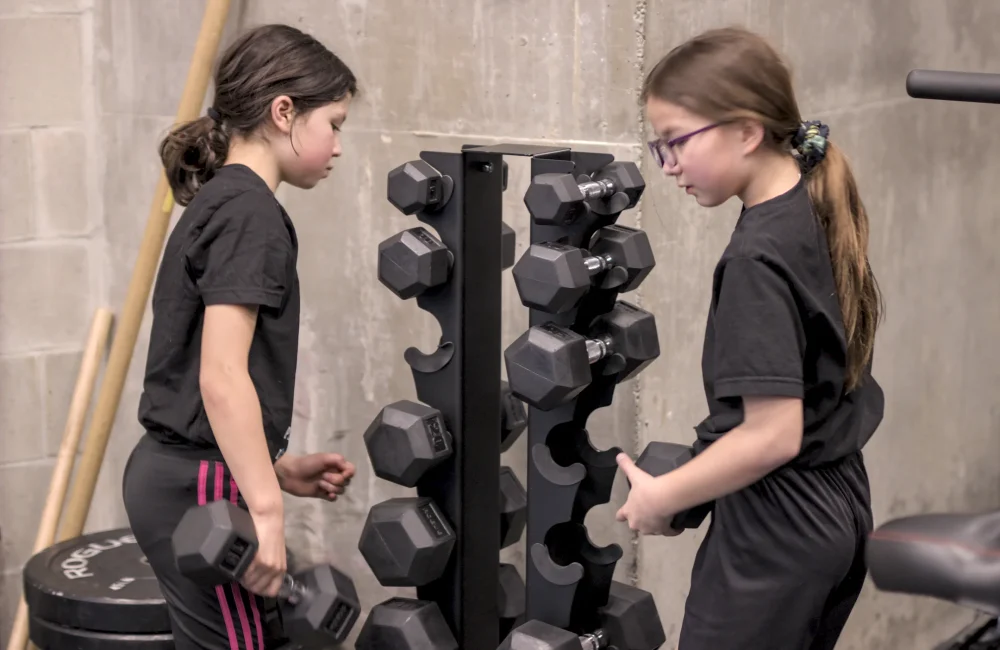
Building a Strong Foundation: The Proven Benefits of Strength & Conditioning for Kids 8-12
The scientific evidence overwhelmingly supports the profound benefits of strength and conditioning for children aged 8-12.
Enhanced Muscular Strength and Power
Existing research clearly indicates that various forms of resistance training can elicit significant performance improvements in young athletes. These improvements include gains in a wide range of measurable outcomes such as muscular strength, power production, running velocity, tennis serve velocity, ball shooting speed, change of direction speed, aerobic endurance, dynamic balance, flexibility, and general motor performance in children and adolescents.
Meta-analytical findings specifically show that children demonstrate greater training-induced gains in motor skill performance, such as jumping, running, and throwing, following structured resistance training compared to adolescents. These enhanced capabilities mean that stronger young athletes will be better prepared to learn complex movements, master sport tactics, and withstand the rigorous demands of long-term sports training and competition.
Accelerated Motor Skill Development & Physical Literacy
A high level of muscular fitness is a fundamental contributor to effective performance ability in young athletes. A multidimensional strength and conditioning program can significantly improve performance across a wide range of physiological and skill assessments. This directly leads to enhanced physical literacy.
Children who develop foundational strength become more efficient “movers” and are likely to move with increased confidence and competence in their physical abilities.
Powerful Injury Prevention
One of the most compelling benefits of strength and conditioning for youth is its powerful effect on injury prevention.
A recent meta-analysis of children and adolescent athletes indicates that resistance training reduces sports-related injuries, including both overuse and acute injuries, by up to 66%.
For children who specialize intensely in a single sport at a young age, a multifaceted resistance training program with qualified instruction is crucial. This type of program can ensure that the diversification of motor skill development occurs prior to the onset of puberty, which is vital for balanced physical development.
While internet, social media, sport coaches and local fitness trainers can often provide information, at Lift Clinic we advocate for kids getting educated by the most highly qualified strength coaches available. That’s why we’ve hired strength coaches who have completed undergraduate and graduate degrees in kinesiology and coaching, mentored extensively under top strength coaches, and demonstrate an ongoing commitment to professional development.
Additionally, the enhancement of strength through such coaching can address muscular imbalances that might otherwise heighten the risk of overuse or overexposure injuries in the future.
The reduction in injuries achieved through strength training is not merely about avoiding pain; it is a critical enabler for sustained engagement in sports and physical activity. Overuse injuries, for instance, often lead to “nonfunctional overreaching, burnout, and eventual dropout from sport”.
By reducing the risk of such injuries, strength training directly helps children avoid these negative outcomes, thereby fostering lifelong participation and maximizing their athletic potential over the long term. This shifts the focus from simply avoiding harm to actively promoting long-term enjoyment and success in physical pursuits.
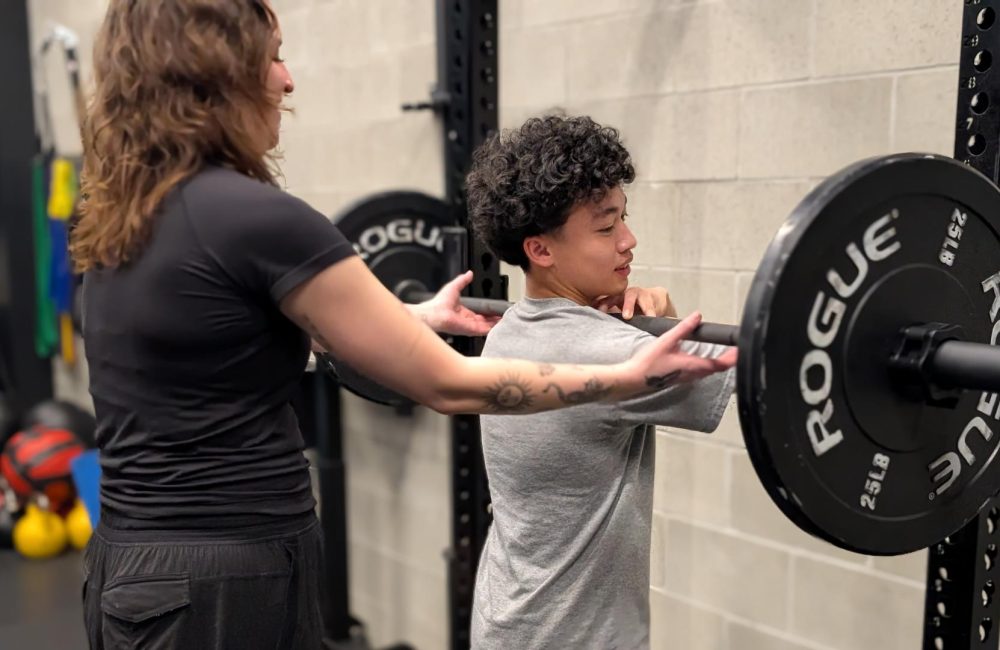
Why Early Intervention Matters: Harnessing Neuromuscular Plasticity
The period of childhood, particularly between ages 8-12, represents a unique and critical window for physical development, largely due to the concept of “trainability of youth” and profound neuromuscular plasticity.
The “Trainability of Youth”: A Critical Window
The ability of young athletes to adapt to resistance training is profoundly influenced by a complex interplay of anatomical and physiological processes occurring at each stage of development. The early years of life are characterized by rapid changes in the myelination of the central nervous system, which is crucial for efficient nerve signal transmission. During this period, children demonstrate greater training-induced gains in strength and motor skill performance compared to adolescents. This heightened responsiveness is a key characteristic of the “trainability of youth.”
This heightened neuromuscular plasticity in childhood represents a finite, optimal window for laying down fundamental motor control patterns and strength foundations. If this window is missed, the consequences extend beyond a slower start. Without early interventions, coaches at all levels will eventually need to address technical flaws and neuromuscular limitations that become significantly harder to correct once ingrained motor control patterns have developed over time.
Furthermore, children who are not exposed to appropriate resistance training early in life may not be able to capitalize on the high degree of neuromuscular plasticity available during this vital developmental period. This implies a “use it or lose it” principle for neuromuscular development. Missing this window does not just mean a delayed start; it means that suboptimal movement patterns can become deeply ingrained, potentially creating persistent athletic limitations and increasing susceptibility to injuries later in life. This underscores the urgency and importance of early, qualified intervention.
Neuromuscular Plasticity: The Foundation for Future Prowess
Owing to this remarkable neuromuscular plasticity during the growing years, there is an unparalleled opportunity to target strength development early in life. This early investment sets the stage for enhanced athletic prowess later in life. Children can learn advanced resistance training skills, such as weightlifting movements or advanced plyometrics, at an earlier age and more efficiently than older populations. This is because their developing pathways that control coordination, control, and proficiency are highly receptive to new motor learning.
Early, Qualified Intervention is Crucial
The importance of education and instruction on proper resistance training techniques and procedures cannot be overstated. It is important to note that there is no evidence-based minimum age for participation in a supervised resistance training program. The primary criteria are that participants should be able to follow instructions, behave safely, and handle the demands of a training program, which typically occurs around 7-8 years of age.
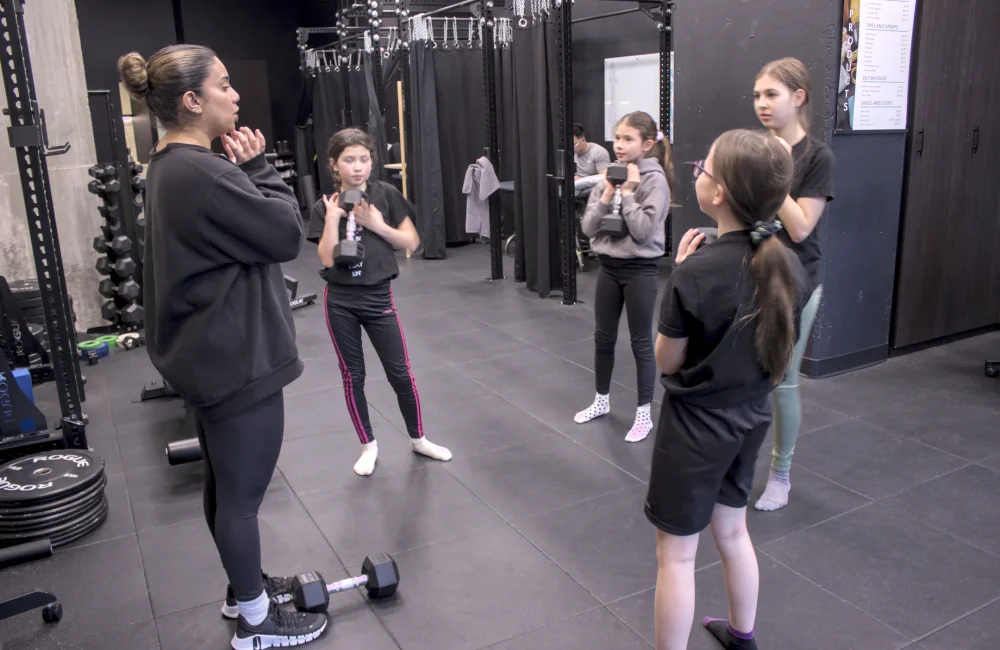
Lift Clinic's Approach: Nurturing Young Athletes for Life
At Lift Clinic, we are uniquely positioned to address the complex needs of young athletes, ensuring they build a robust foundation for lifelong physical health and performance.
Our Integrated Team: A Holistic Path to Youth Development
At Lift Clinic, we understand that a child’s physical development is multifaceted and interconnected. Our integrated team of Vancouver Physiotherapists, Chiropractors, Massage Therapists, and Strength Coaches works collaboratively to provide comprehensive care. This means your child benefits from a holistic perspective, ensuring all aspects of their physical well-being—from mobility and alignment to muscular strength and recovery—are addressed.
For kids, whose bodies are rapidly developing and whose physical challenges can be interconnected (e.g., growth spurts affecting biomechanics, leading to injury, then requiring targeted strengthening), an integrated team provides synergistic care. This ensures that potential issues are identified early and addressed comprehensively, optimizing the developmental window rather than treating isolated symptoms. This represents a higher level of care than sequential, siloed treatments.
Root Cause Focus: Understanding Your Child’s Unique Needs
We don’t just look at symptoms; we delve into the root cause of any pain, mobility issues, or performance plateaus your child might experience. For example, a child with knee pain from sports might be experiencing it due to weakness in their hips or poor landing mechanics, not just an issue with the knee itself. Our strength coaches will cue these underlying movement deficiencies, but if they find kids aren’t responding they may reach out and let you know to see a physio or chiro for clinical assessment and treatment to create a truly effective and lasting plan.
Active Rehab & Progressive Training: Building Resilience
This means your child learns how to move correctly, builds strength safely, and gains the confidence to perform a variety of resistance exercises. We ensure activities are developmentally appropriate, progressive, and technique-driven, just as the research advocates. And if they need rehab support or detailed assessment from a physio or chiropractor, they’re already familiar with the clinic and our team. In kids, knowing when and how to access care is also an important life skill.
Proactive & Empowering: Investing in Long-Term Health
Lift Clinic guides clients toward long-term outcomes like injury prevention, longevity, and peak performance. We empower your child to take ownership of their physical health, fostering a lifelong love for movement and activity. This isn’t just about short-term gains; it’s about building a resilient, capable body for their future, ensuring they can enjoy sports and daily life without limitations for years to come.
Conclusion
The science is clear: strength and conditioning for kids aged 8-12 is a powerful and essential tool for building physical literacy, enhancing athletic performance, and significantly reducing injury risk. It’s about empowering them to be “Faster, Higher, Stronger” in all aspects of life, not just in sports, but in their daily activities and long-term health.
At Lift Clinic, our integrated team, root-cause focus, active rehab model, and proactive approach provide the ideal environment for your child to thrive. We are dedicated to nurturing not just athletes, but healthy, confident individuals prepared for a lifetime of movement and well-being. Don’t let the modern challenges of youth activity hold your child back. Invest in their future health and potential today.
Curious how personalized strength coaching can help your child achieve their goals, prevent injury, or enhance performance? Schedule a complimentary training consult with one of our expert Vancouver personal trainers and take the first step towards a stronger, more resilient you. Visit liftclinic.ca/kids to learn more about our youth programs, or bring your team to a Discover Your Strength Workshop.
